De tragedie met de Apollo 1
Op 27 januari 1967 sloeg het noodlot toe op het lanceerplatform van Cape Kennedy tijdens een oefening voor de vlucht van de Apollo 204 (AS-204). Deze missie zou de eerste bemande vlucht worden van het Apolloprogramma en stond gepland om gelanceerd te worden op 21 februari 1967. De astronauten Virgil Grissom, Edward White en Roger Chaffee kwamen om het leven toen een snelle hevige brand de binnenkant van de commandomodule (CM) verwoestte.
Het grondige onderzoek naar de brand en de daaropvolgende uitgebreide herziening van de Apollo commandomodules vertraagde de bemande lanceringen totdat verantwoordelijken binnen de NASA er groen licht voor gaven. De planning van de Saturnus IB werd een klein jaar opgeschort en de raket die uiteindelijk de aanduiding AS-204 kreeg, droeg een maanmodule (lunar module, LM) als nuttige lading, in plaats van een commandomodule. De missies van AS-201 en AS-202 met een Apollo ruimtevaartuig aan boord stonden officieus bekend als de Apollo 1 en Apollo 2 missie. AS-203 droeg enkel de aerodynamische neuskegel.
In de lente van 1967 maakte dr. George E. Mueller, Associate Administrator for Manned Space Flight, bekend dat de missie die oorspronkelijk gepland stond voor Grissom, White en Chaffee de naam zou krijgen van Apollo 1. Bovendien zou de eerste lancering van de Saturnus V, die gepland stond voor november 1967, de naam Apollo 4 zou krijgen. De uiteindelijke lancering van AS-204 kwam bekend te staan als de Apollo 5 missie. De naam Apollo 2 of 3 is nooit aan een missie gegeven.
De tweede lancering van een Saturnus V vond volgens planning plaats in de vroege morgen van 4 april 1968. Deze vlucht, die de naam kreeg AS-502, of Apollo 6, was een succes, ondanks dat twee van de vijf motoren van de eerste trap voortijdig uitvielen en de motor van de derde trap weigerde te herstarten nadat de baan om de aarde was bereikt.
Bemanning
Virgil I. Grissom
Edward H. White.
Roger B. Chaffee
Reservebemanning
Walter M. Schirra jr.
Donn F. Eisele
Walter Cunningham
Nuttige lading
Ruimteschip 012
Brand op het lanceerplatform
Noodoproep: 27 januari 1967 om 6:31:05 p.m. EST
Lanceercomplex 34
Saturnus IB AS-204
CSM 012
[Vertaald van: https://www.nasa.gov/mission_pages/apollo/missions/apollo1.html op 19-03-2019]
Op 27 januari 1967 sloeg het noodlot toe op het lanceerplatform van Cape Kennedy tijdens een oefening voor de vlucht van de Apollo 204 (AS-204). Deze missie zou de eerste bemande vlucht worden van het Apolloprogramma en stond gepland om gelanceerd te worden op 21 februari 1967. De astronauten Virgil Grissom, Edward White en Roger Chaffee kwamen om het leven toen een snelle hevige brand de binnenkant van de commandomodule (CM) verwoestte.
Het grondige onderzoek naar de brand en de daaropvolgende uitgebreide herziening van de Apollo commandomodules vertraagde de bemande lanceringen totdat verantwoordelijken binnen de NASA er groen licht voor gaven. De planning van de Saturnus IB werd een klein jaar opgeschort en de raket die uiteindelijk de aanduiding AS-204 kreeg, droeg een maanmodule (lunar module, LM) als nuttige lading, in plaats van een commandomodule. De missies van AS-201 en AS-202 met een Apollo ruimtevaartuig aan boord stonden officieus bekend als de Apollo 1 en Apollo 2 missie. AS-203 droeg enkel de aerodynamische neuskegel.
In de lente van 1967 maakte dr. George E. Mueller, Associate Administrator for Manned Space Flight, bekend dat de missie die oorspronkelijk gepland stond voor Grissom, White en Chaffee de naam zou krijgen van Apollo 1. Bovendien zou de eerste lancering van de Saturnus V, die gepland stond voor november 1967, de naam Apollo 4 zou krijgen. De uiteindelijke lancering van AS-204 kwam bekend te staan als de Apollo 5 missie. De naam Apollo 2 of 3 is nooit aan een missie gegeven.
De tweede lancering van een Saturnus V vond volgens planning plaats in de vroege morgen van 4 april 1968. Deze vlucht, die de naam kreeg AS-502, of Apollo 6, was een succes, ondanks dat twee van de vijf motoren van de eerste trap voortijdig uitvielen en de motor van de derde trap weigerde te herstarten nadat de baan om de aarde was bereikt.
Bemanning
Virgil I. Grissom
Edward H. White.
Roger B. Chaffee
Reservebemanning
Walter M. Schirra jr.
Donn F. Eisele
Walter Cunningham
Nuttige lading
Ruimteschip 012
Brand op het lanceerplatform
Noodoproep: 27 januari 1967 om 6:31:05 p.m. EST
Lanceercomplex 34
Saturnus IB AS-204
CSM 012
[Vertaald van: https://www.nasa.gov/mission_pages/apollo/missions/apollo1.html op 19-03-2019]
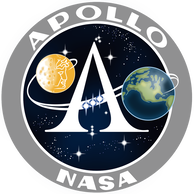
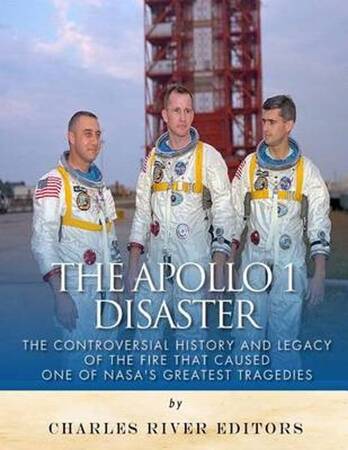
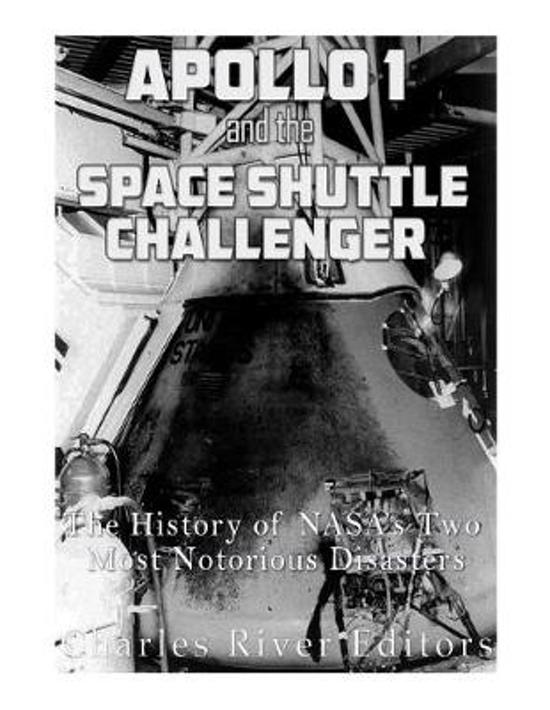
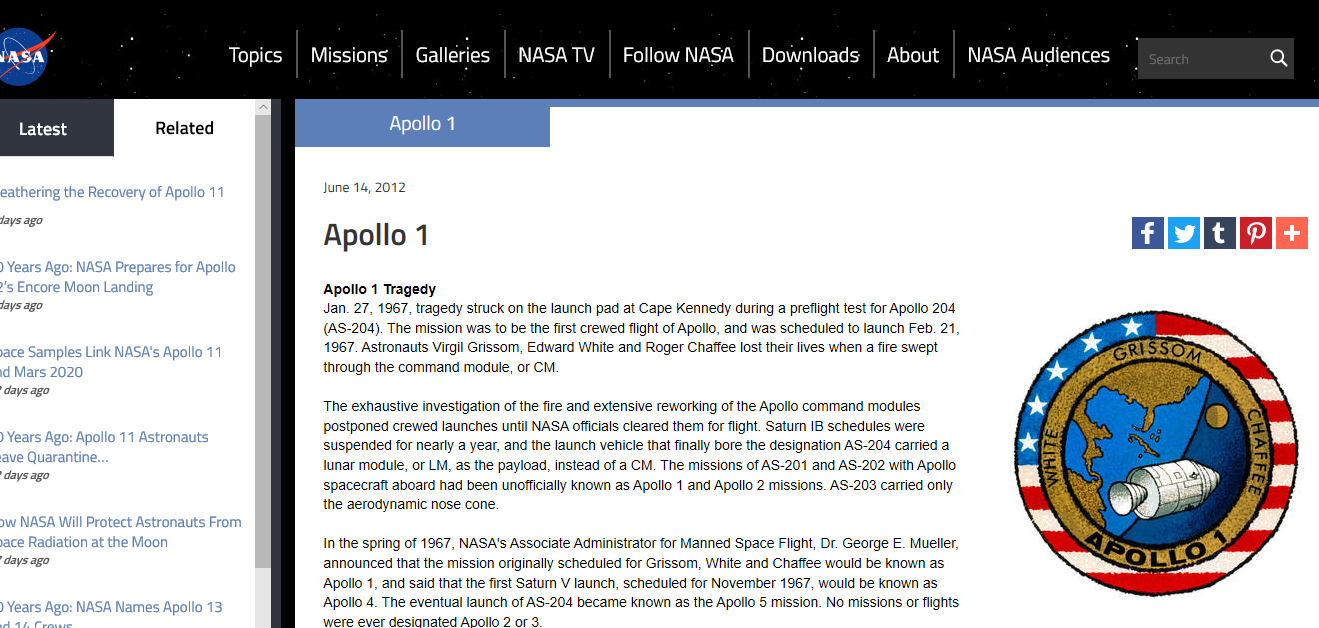
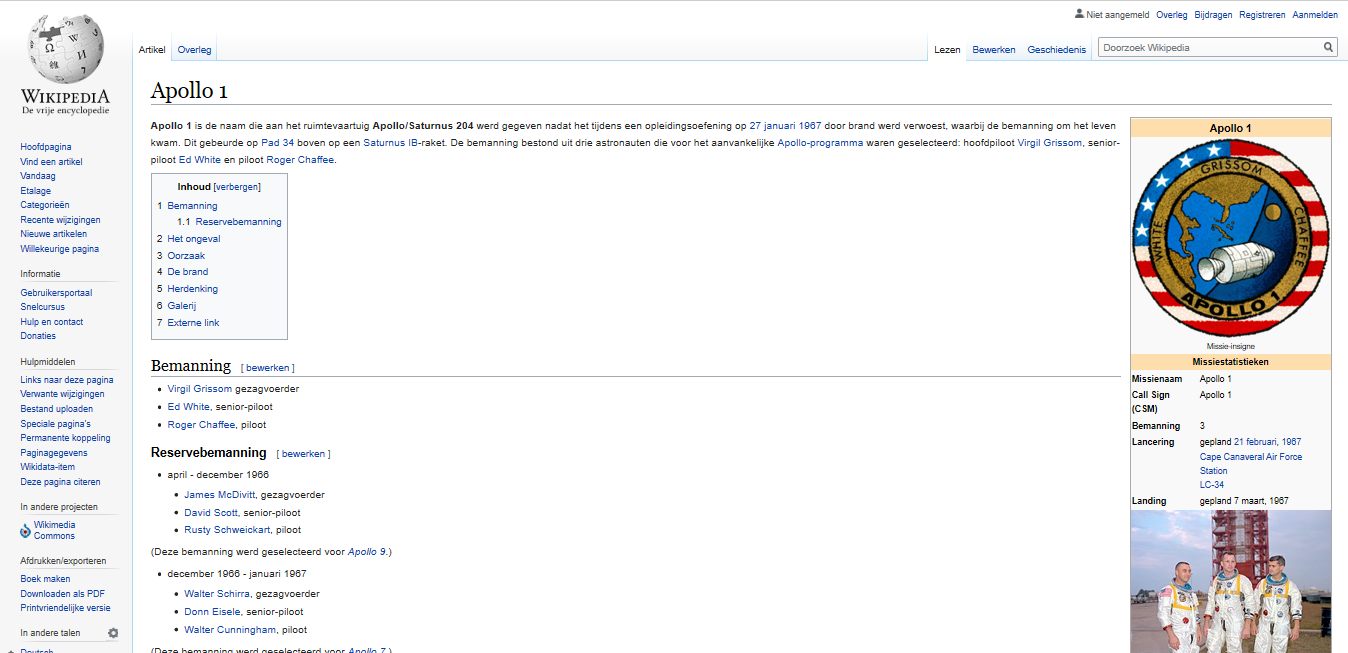
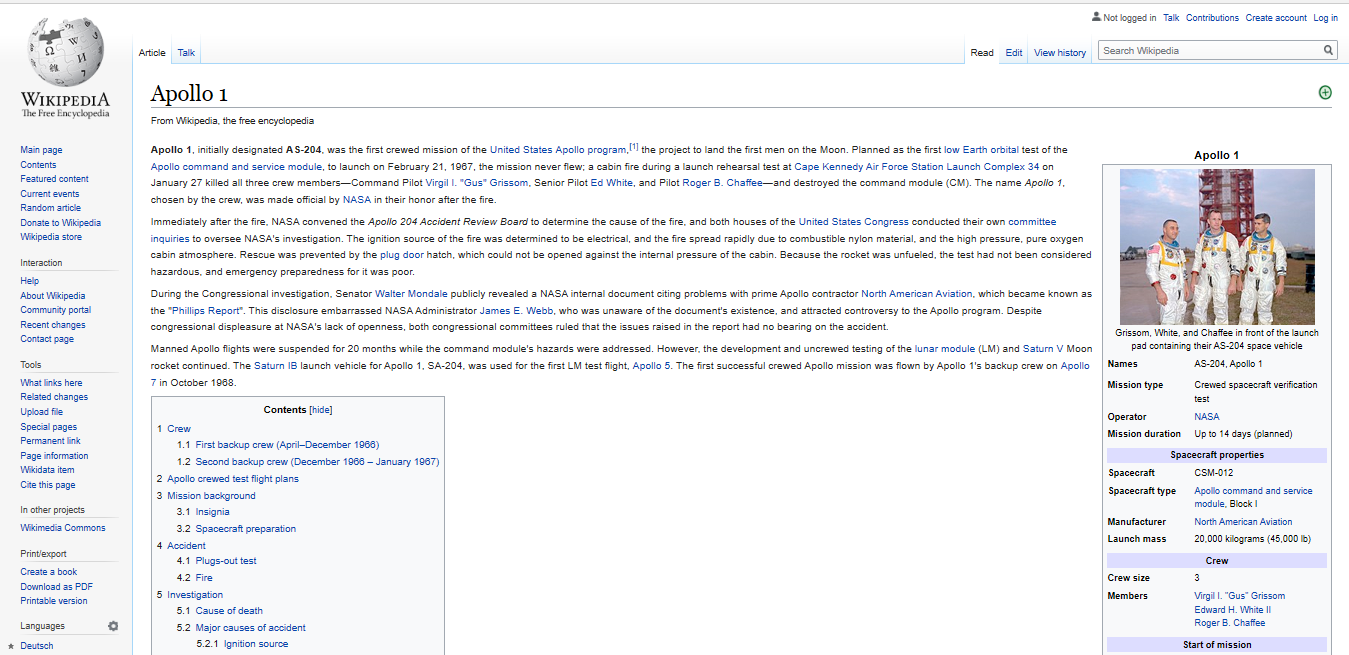
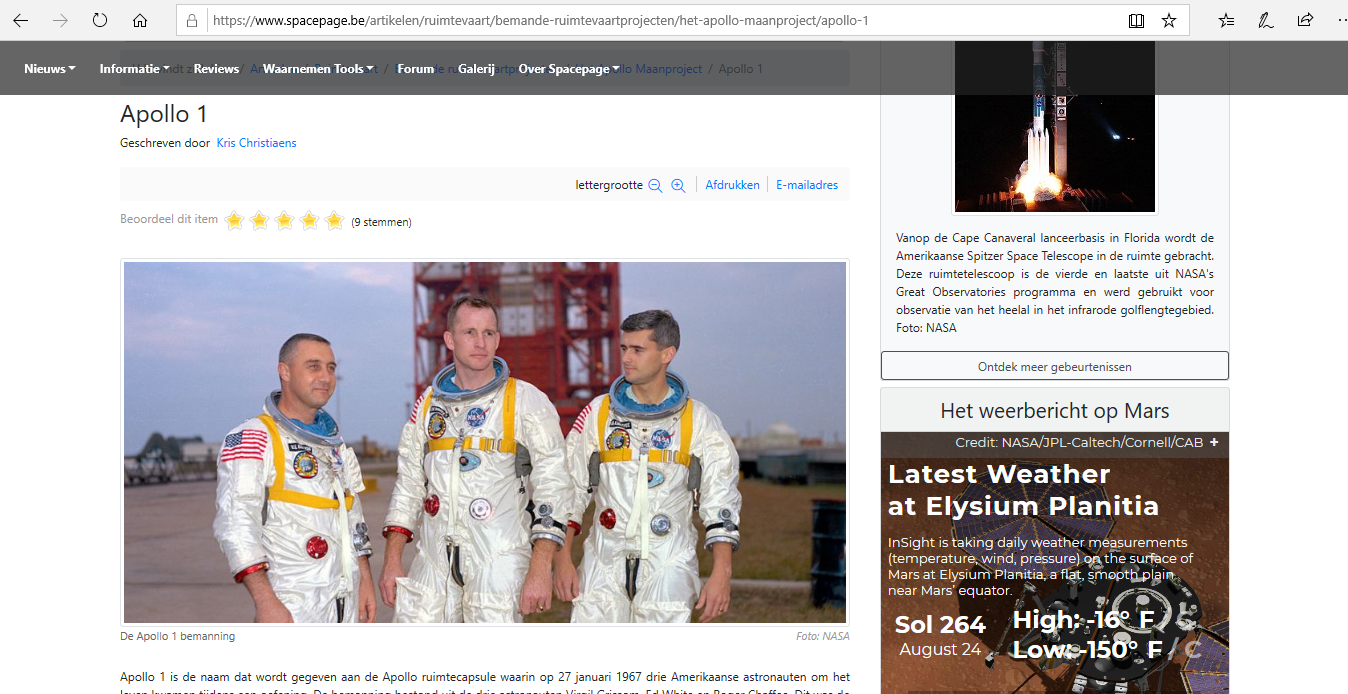
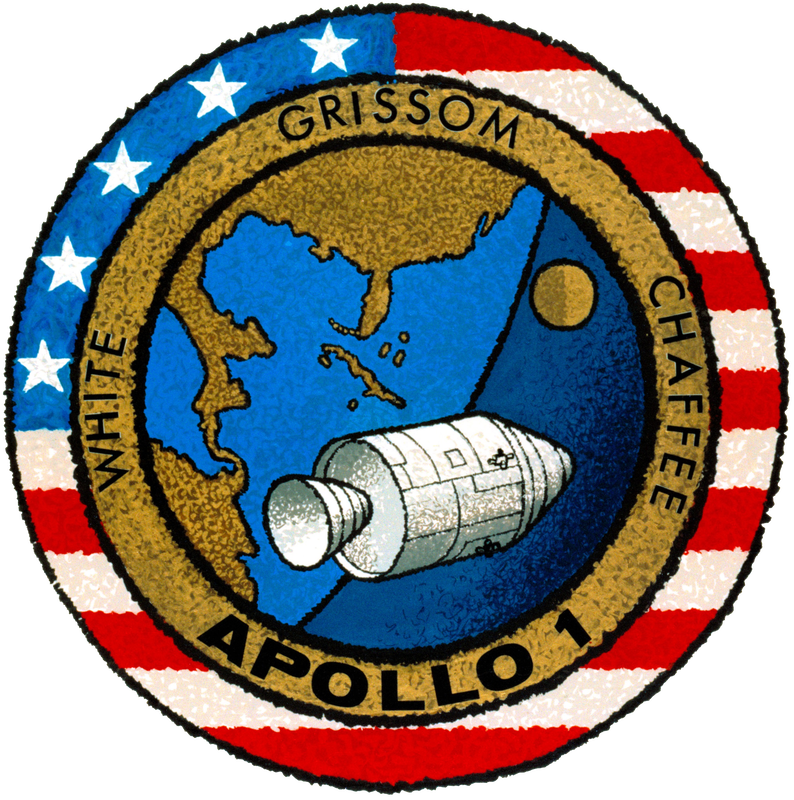
 RSS-feed
RSS-feed
